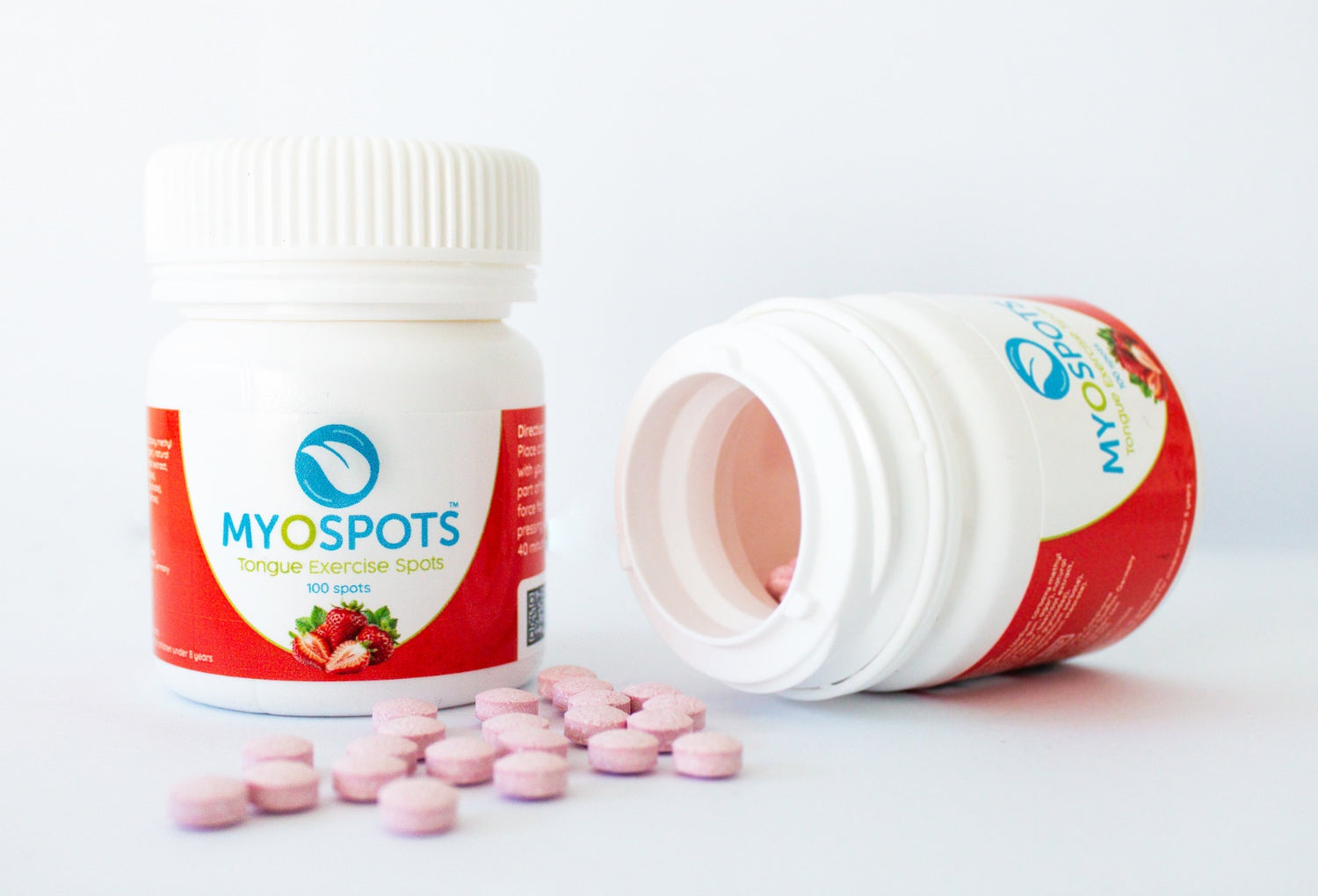Myospots are a simple, yet effective tool that improve tongue posture and help break the habit of mouth breathing.
Myospots are dissolvable, adhesive pads that you place on the roof of your mouth to encourage your tongue to elevate. While there’s other products out there that claim to solve mouth breathing, like mouth tape – we talk more about the pros and cons of that here – there’s no product like Myospots for their efficacy and ease of use.
Myospots are simple to use but they may take some getting used to, especially for children. You might also wonder what makes Myospots sticky. We’re answering all your Myospots questions, and giving you some tips on how to get the best out of your Myospots.
It won’t take long for you to see that Myospots are a simple, effective tool you can use to help yourself, your patients and family members address mouth breathing and the associated health concerns that come with it.
So how do Myospots help?
Mouth breathing and poor tongue posture often go hand in hand. Myospots are small, flavoured pads that help train your tongue to sit in the correct position in your mouth; that is, on the roof, along the back of your top row of teeth.
Myospots stick to the roof of your mouth, enticing your tongue to lift to touch the spot. This exercise elevates and strengthens your tongue, training it to sit in the correct position, sealing your lips and encouraging you to breathe through your nose. Myospots are backed by research and trusted by health professionals, who use them every day to help patients breathe better. Mouth breathing is bad for your health, and it may even affect your sleep.
There’s also some research that shows that mouth breathing can change face shape.
What makes Myospots sticky?
Training the tongue to sit in the correct position starts with sticking a Myospot to the roof of the mouth. But how do Myospots actually stick?
You may think that Myospots have adhesive in them, but they don’t. Myospots are made of natural materials that absorb moisture quickly from their surroundings. The surrounding moisture activates the Myospot and so they become sticky. Myospots do not contain synthetic glue or adhesive, they only become sticky when they come in contact with moisture.
This means – as long as they stay dry – they won’t clump together in their container, or stick to your fingers while you are holding them (unless your fingers are wet!).
Top tips for using Myospots
When you, your patients or family members are using Myospots, the first time is likely to be the trickiest. Here’s some tips for getting the best out of your Myospots:- Keep the lid on: unless you are using your Myospots, make sure the lid is firmly sealed to stop moisture getting into the bottle.
- Store safely: it’s best to store your Myospots bottle in a dry area away from direct sunlight, perhaps a kitchen cupboard or pantry. Our specially designed Myospots pouches allow you to store smaller numbers of Myospots, so they’re easier to access, and portable.
- Dry your hands: make sure your hands are both clean and dry when you’re taking Myospots out of their bottle. Better still, tip one Myospot into the lid of the bottle, rather than putting your fingers in the bottle to try and retrieve one.
- Wet your mouth: the trick with Myospots is they don’t get sticky until they come into contact with moisture. For a Myospot to stick well, and stay stuck, they need a wet mouth. If a child or patient is having trouble getting their Myospot to stick, suggest they take a big drink of water before putting the Myospot in place.
- Be gentle and patient: use your finger to gently place the Myospot on the WET roof of your main, and wait for at least 10 seconds. The trick is to be gentle, even though this feels counter intuitive; don’t use your tongue to push hard or flick it upwards as this will prevent it from staying in place.
- Watch the curves: the top of your mouth is naturally ridged and finding a flat place for the Myospot to sit is key to successful application. You might find it difficult to adhere the spot exactly at the centre while a flatter surface is at one side of the roof of your mouth, so aim for that rather than the centre. Each time you use a Myospot, make sure to alternate between the left and right side of your mouth.
- Observe: if you’re helping a child or family member with Myospots, check back in with them regularly after the initial application to make sure the Myospot is still in place.
- Do not use your tongue while applying: Do not flick the Myospot with your tongue as this can dislodge it before it gets a chance to strongly adhere. This is especially important with children and may require monitoring for the first 5-10 minutes to ensure the tongue is passively resting against the Myospots.
All these tips will help you get the best out of your Myospots, whether you are using them for yourself, your patients or your family! Myospots are a useful tool to help break the mouth breathing habit. Get started with Myospots today.
*All information is general in nature and is not intended to be a substitute for professional medical advice. Your healthcare provider can consult with you to confirm if this advice is right for you.




